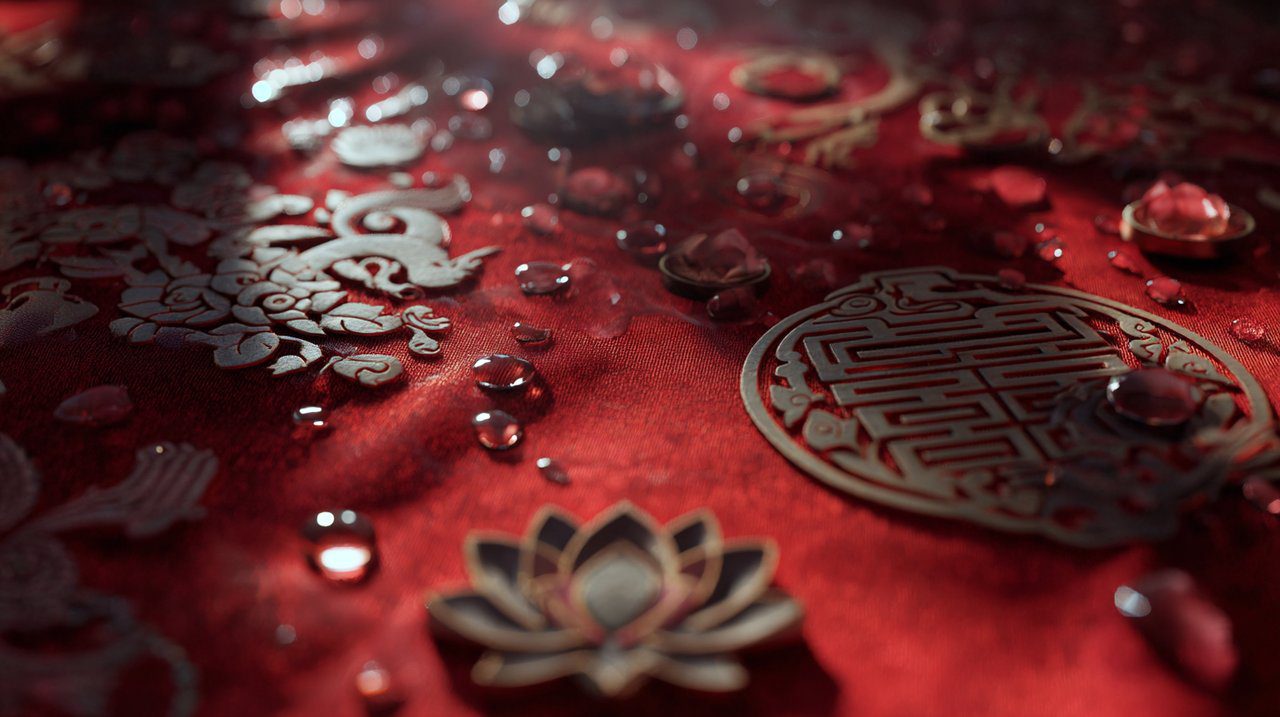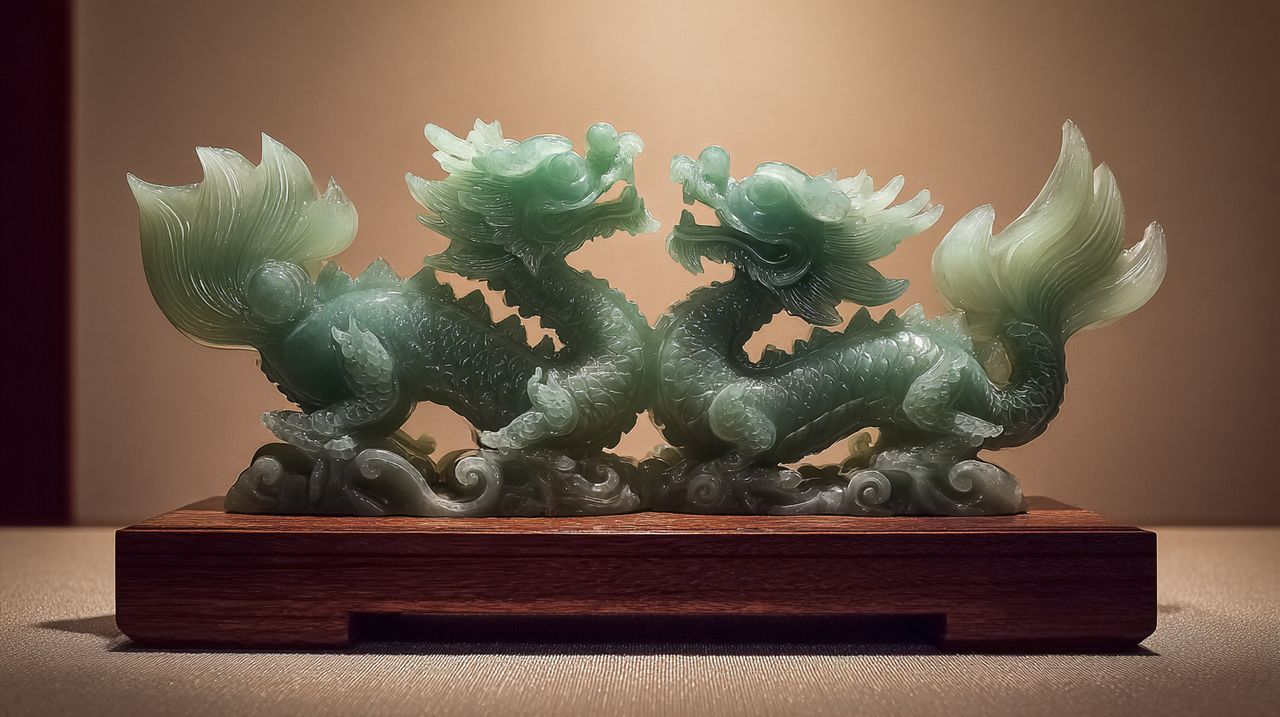Echoes of Affection: Unpacking Symbols of Love in Chinese Culture
Why do the ancient Symbols of Love in Chinese Culture continue to resonate so profoundly in our digital age, captivating hearts globally and becoming powerful conduits for modern expressions of emotion and belief? This enduring appeal is not merely a matter of aesthetic charm; it points to a deeper cultural code, a rich tapestry woven from millennia of philosophical thought, mythical narratives, and artistic expression that speaks to universal human experiences. Unlike a singular, often romanticized Western concept of love, Chinese expressions of affection are characteristically multifaceted. They encompass not only romantic devotion but also profound familial bonds, deep-seated friendships, and a harmonious connection with the natural world. These symbols, in essence, function as visual proverbs, encapsulating complex ideals of fidelity, prosperity, and unity, thereby inviting a deeper contemplation of what it truly means to love and be loved within a holistic worldview. 
Roots of Affection: The Philosophical Bedrock of Chinese Love Symbols
The profound resonance of Chinese love symbols stems not from mere decorative artistry, but from their deep roots in philosophical traditions. They serve as distillations of a worldview where personal relationships are intricately linked, often inextricably, to broader cosmic and societal harmony.
Harmony in Confucian and Taoist Thought
To truly grasp the essence of these symbols, one must first delve into the foundational philosophies that shaped them. Confucianism, with its profound emphasis on 仁 (rén), or benevolence, and 礼 (lǐ), propriety, frames love not as an isolated sentiment but as an integral component within a structured social order, commencing with the family unit. Within this framework, filial piety (孝, xiào) emerges as the foundational expression of love, a principle that extends outwards to encompass community and nation. This perspective is not restrictive; rather, it posits love as a powerful harmonizing force, meticulously cultivated to foster societal stability and individual moral development. Taoism, in stark contrast yet complementary fashion, champions the principle of 顺其自然 (shùn qí zì rán) – the art of going with the flow of nature – and the quintessential balance of 阴阳 (yīn yáng), yin and yang. It suggests that genuine affection arises from a natural, unforced connection, mirroring the very ebb and flow of the universe’s complementary forces.
The Chinese understanding of love transcends mere fleeting emotion; it is an active, disciplined pursuit of balance, mutual respect, and a shared journey towards both personal fulfillment and collective well-being. This philosophical depth imbues their symbols with enduring significance.
Cosmic Order Reflected in Symbolism
Beyond philosophical tenets, many Chinese love symbols derive their profound power from their inherent connection to the grand cosmic order. The cyclical rhythms of seasons, the dynamic interplay of elements, and the fundamental balance of yin and yang are not abstract theoretical constructs. Rather, they are living principles that profoundly inform and mirror the dynamics of human relationships. Consider, for instance, the iconic pairing of the dragon and phoenix. This symbol perfectly embodies the Taoist ideal of yin and yang in harmonious union, representing far more than just a couple. It signifies a balanced, thriving universe in miniature, where complementary forces coalesce to create flourishing. This cosmic perspective imbues these symbols with a singular spiritual weight, positing that true love is, in essence, a reflection of this profound universal order.
Enduring Emblems: Core Symbols and Their Narratives
Having explored the philosophical bedrock, we now turn to the specific, enduring emblems that have, over centuries, become synonymous with various facets of love. Each carries not only rich stories but also layered meanings, serving as visual distillations of profound cultural truths.
Dragon and Phoenix: The Unity of Opposites
Among the pantheon of Chinese symbols, the 龙 (lóng) (dragon) and 凤 (fèng) (phoenix) stand as perhaps the most emblematic Symbols of Love in Chinese Culture. The dragon, representing a potent masculine yang force, traditionally symbolizes imperial authority, formidable strength, and auspicious good fortune.  Conversely, the phoenix, a creature of exquisite grace and feminine yin energy, embodies beauty, prosperity, and the promise of rebirth. Their combined imagery, encapsulated in the idiom 龙凤呈祥 (lóng fèng chéng xiáng) — “dragon and phoenix bringing prosperity” — signifies not merely a perfect union, but a profound, complementary partnership, especially within the context of marriage. Their depiction transcends simple romance; it speaks to the essential harmonious balance of complementary forces that are understood to underpin true prosperity and holistic well-being within a relationship and, by extension, the family.
Conversely, the phoenix, a creature of exquisite grace and feminine yin energy, embodies beauty, prosperity, and the promise of rebirth. Their combined imagery, encapsulated in the idiom 龙凤呈祥 (lóng fèng chéng xiáng) — “dragon and phoenix bringing prosperity” — signifies not merely a perfect union, but a profound, complementary partnership, especially within the context of marriage. Their depiction transcends simple romance; it speaks to the essential harmonious balance of complementary forces that are understood to underpin true prosperity and holistic well-being within a relationship and, by extension, the family.
Mandarin Ducks and Lotus: Emblems of Fidelity and Purity
Mandarin ducks (鸳鸯, yuānyāng) are celebrated for their remarkable, often lifelong, pair-bonding, establishing them as potent Chinese love symbols for couples. They are quintessential representations of unwavering loyalty, profound fidelity, and enduring marital bliss. Frequently depicted swimming in serene harmony with 荷花 (hé huā) (lotus flowers), the lotus itself introduces additional layers of profound meaning. Emerging pristine and unsullied from muddy waters, the lotus symbolizes purity, integrity, and the journey towards spiritual enlightenment. This potent combination thus suggests a relationship capable of maintaining its purity and truthfulness even amidst life’s inevitable challenges, underscoring both enduring commitment and a shared, upward journey towards clarity and spiritual growth.
Jade and Peony: The Promise of Eternity and Flourishing Beauty
玉 (yù) (jade) holds an unparalleled place of reverence in Chinese culture, esteemed for its intrinsic purity, exceptional durability, and perceived connection to immortality—a stone deeply interwoven with the very fabric of Chinese cosmology. It powerfully symbolizes eternity, divine protection, and unblemished moral integrity. As a symbol of love, jade thus signifies an enduring, unbreakable bond, a connection as resilient and timeless as the stone itself. Complementing jade is the magnificent 牡丹 (mǔ dān) (peony), justly crowned the “King of Flowers.” This bloom represents wealth, honor, prosperity, and flourishing beauty. When these two potent symbols are thoughtfully combined, particularly in art or jewelry, they convey profound wishes for a relationship that is not only eternal but also characterized by abundant prosperity, radiant beauty, and vibrant vitality. Consider, for example, a couple choosing matching jade pendants adorned with peony engravings—a tangible expression of their aspiration for an everlasting and truly abundant union.
Beyond Romance: The Expansive Canvas of Chinese Love
While the allure of romantic love often captivates our imagination, Chinese love symbols compellingly illustrate a broader, more expansive understanding of affection. This rich tapestry of sentiment extends far beyond romantic partnerships, encompassing the profound bonds of family, the steadfastness of friendship, and the collective well-being of society itself.
Kinship and Filial Piety: Love as the Societal Foundation
At the very heart of Chinese society, serving as its foundational pillar, lies the profound concept of family and 孝 (xiào), or filial piety. Symbols such as the auspicious 双喜 (shuāng xǐ) (double happiness character) are frequently observed in broader family contexts, signifying not merely marital joy, but the vital continuation of the family line and the harmony it inherently brings to the collective. Beyond explicit characters, elements like the family tree, the revered shared ancestral tablet, and even specific traditional knots or intricate carvings serve as powerful symbols. They eloquently convey the deep interconnectedness and enduring love within a kinship group, where respect for elders and the diligent nurturing of the young stand as paramount, tangible expressions of affection.
Bonds of Trust: Friendship and Shared Purpose
Beyond kinship, friendship (友谊, yǒuyì) holds an equally revered and profound place in Chinese culture, often regarded with a gravitas comparable to familial bonds. The ancient concept of 君子之交淡如水 (jūn zǐ zhī jiāo dàn rú shuǐ) – “the friendship of a gentleman is as pure as water” – eloquently suggests a deep, unassuming connection, untainted by ulterior motives or superficiality. It speaks to a bond built on genuine respect and clarity. Further illustrating this depth are symbols like the 松 (sōng) (pine), 竹 (zhú) (bamboo), and 梅 (méi) (plum blossom), collectively celebrated as the “Three Friends of Winter.” These botanical emblems represent steadfast resilience, unwavering integrity, and enduring friendship that perseveres through adversity. They stand not as romantic symbols, but as powerful affirmations of loyalty, shared values, and mutual support between individuals.
Modern Echoes: Contemporary Expressions of Ancient Affection
As societies evolve, so too do the expressions of timeless sentiments. In contemporary life, these ancient symbols of affection are being dynamically reinterpreted and embraced in novel ways, finding their place particularly in deeply personal declarations like tattoos and thoughtfully chosen gifts.
Personal Canvas: Chinese Love Symbols for Tattoos
The remarkable surge in popularity of Chinese love symbols for tattoos reflects a pervasive contemporary desire for deeper meaning and a tangible connection to cultural heritage. Individuals thoughtfully select designs such as the double happiness character, the iconic dragon and phoenix, or specific ideograms for “love” (爱, ài) or “destiny” (缘, yuán), choosing to permanently etch their profound commitments and cherished beliefs onto their very skin. These tattoos transcend mere aesthetic choice; they serve as potent personal declarations of love, unwavering loyalty, or a deeply felt spiritual connection. In this way, ancient motifs are powerfully transformed into modern body art, each carrying an undeniable and profound personal significance for the wearer.
Meaningful Gestures: Gifting with Cultural Depth
Beyond personal adornment, modern gifting practices frequently incorporate these symbols, thereby elevating a simple present into a deeply resonant, meaningful gesture. The deliberate choice of a piece of jewelry adorned with a mandarin duck motif, a silk scarf elegantly featuring peonies, or a piece of art depicting the majestic dragons and phoenixes empowers individuals to convey highly specific and nuanced sentiments. A discerning understanding of the meaning of love symbols for couples thus enables truly thoughtful selection, ensuring that the gift transcends mere aesthetic appeal. It becomes a potent cultural token, transmitting heartfelt wishes for enduring happiness, longevity, and profound harmony, a silent yet eloquent message steeped in ancient wisdom.
The Enduring Legacy: Preserving and Evolving Symbolic Meanings
The remarkable journey of Chinese love symbols, from their ancient philosophical origins to their vibrant modern expressions, stands as a powerful testament to their timeless appeal and remarkable adaptability. They offer a unique and invaluable lens through which to comprehend the multifaceted nature of love, demonstrating how it transcends mere romantic sentiment to encompass profound harmony, unwavering commitment, and a deep, intrinsic connection to something far larger than the individual self. As we navigate an increasingly interconnected and rapidly evolving world, these symbols continue their dynamic evolution, consistently finding new forms of expression while meticulously retaining their profound core meanings. They serve as a compelling invitation to look beyond superficial gestures, urging us instead to infuse our expressions of affection with genuine cultural depth and profound spiritual wisdom. Therefore, when one chooses a symbol to convey their deepest feelings, or selects a meaningful gift, it is truly enriching to consider the rich narrative and philosophical heritage embedded within each design. Embracing the symbols of love Chinese culture so generously offers allows us to connect with a legacy of profound affection, thereby enriching our relationships with a timeless wisdom that ensures love is not just felt, but truly understood and deeply cherished.
💡 Frequently Asked Questions
Unlike a singular, often romanticized Western concept of love, Chinese expressions of affection are multifaceted. They encompass not only romantic devotion but also profound familial bonds, deep-seated friendships, and a harmonious connection with the natural world, functioning as visual proverbs for fidelity, prosperity, and unity.
Chinese love symbols are deeply rooted in Confucianism and Taoism. Confucianism emphasizes 'ren' (benevolence) and 'li' (propriety), viewing love as integral to social order and family, beginning with filial piety. Taoism champions 'shun qi zi ran' (going with the flow) and the balance of 'yin and yang,' suggesting genuine affection arises from natural, unforced connection.
The Dragon and Phoenix symbolize the unity of opposites and a complementary partnership, especially in marriage. Mandarin Ducks represent unwavering loyalty and marital bliss. Jade signifies an enduring, unbreakable bond and eternity, while the Peony embodies wealth, honor, and flourishing beauty.
No, Chinese love symbols illustrate a broader understanding of affection. They extend beyond romantic partnerships to include profound familial bonds, like filial piety, and steadfast friendships. For instance, the 'Three Friends of Winter' (pine, bamboo, and plum blossom) symbolize resilience and enduring friendship.







